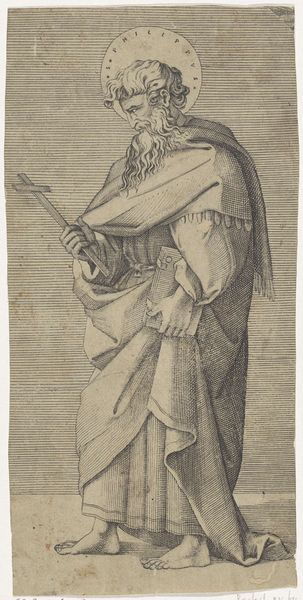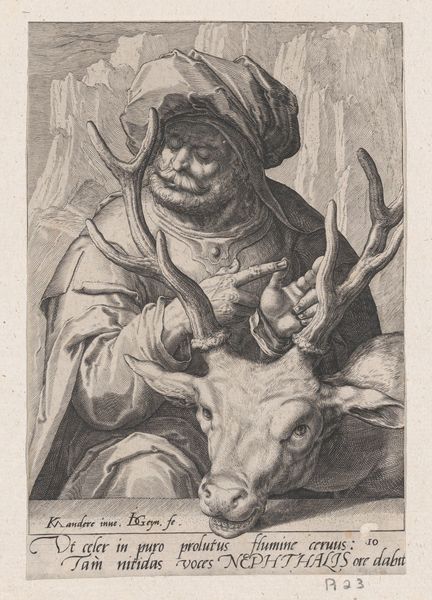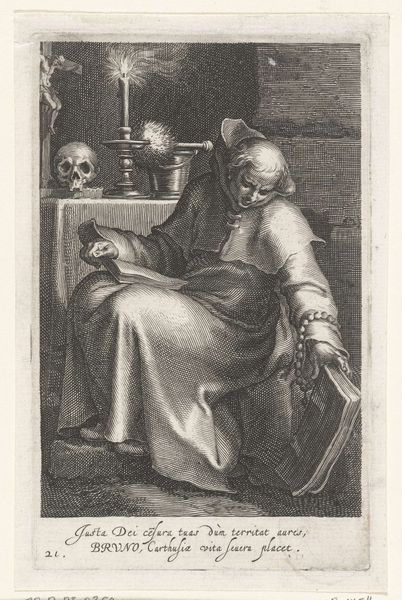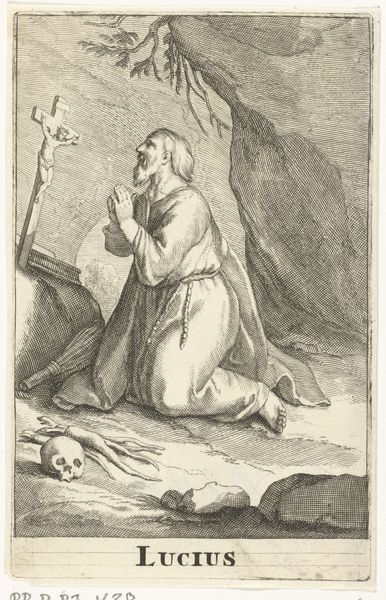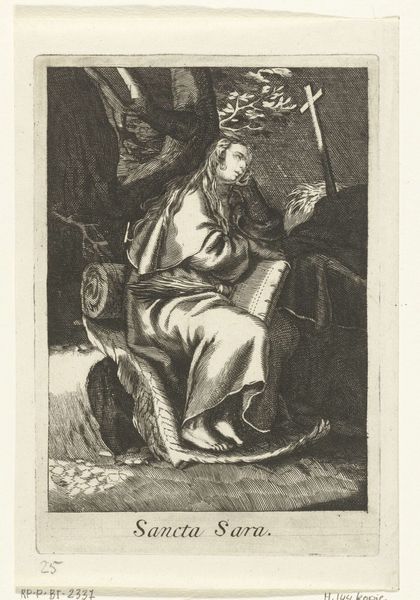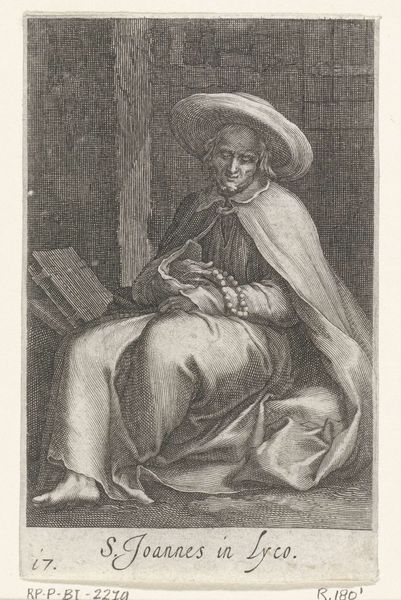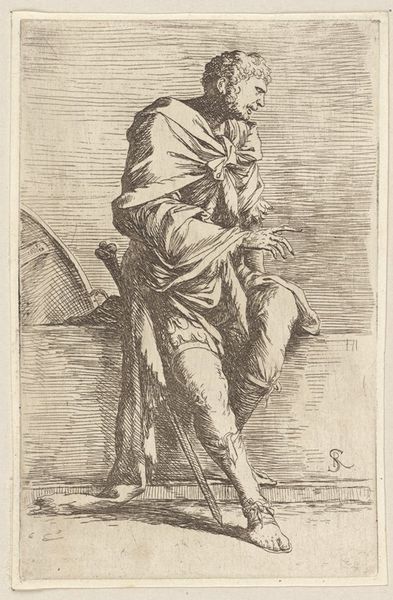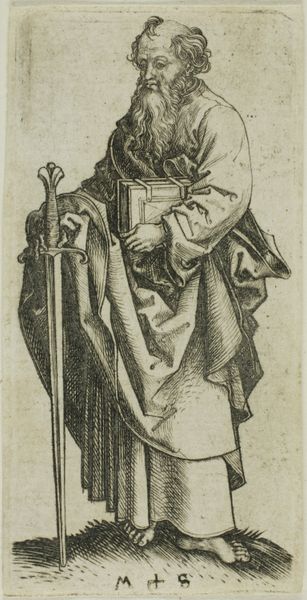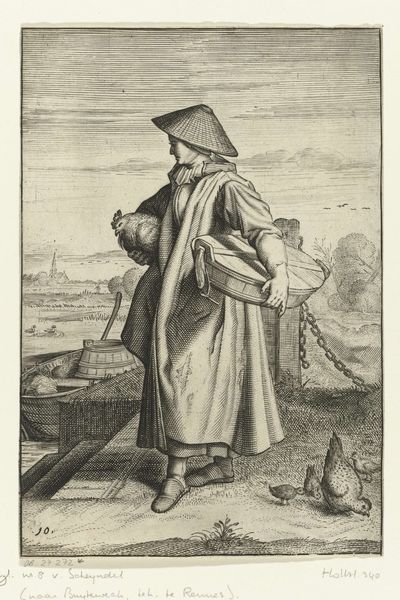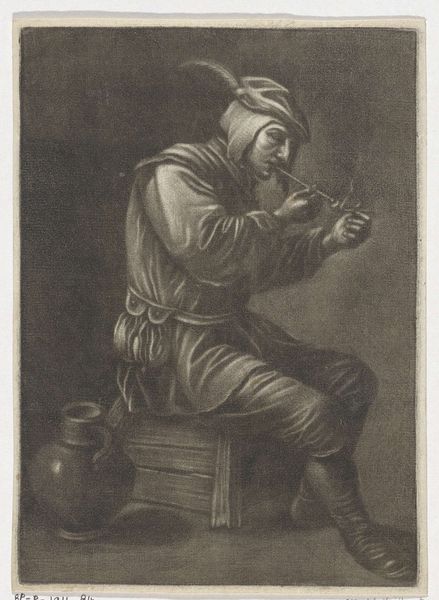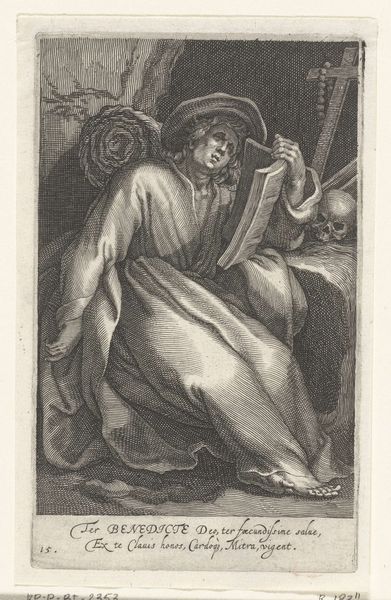
print, engraving
#
portrait
#
medieval
# print
#
figuration
#
line
#
history-painting
#
engraving
Dimensions: height 146 mm, width 91 mm
Copyright: Rijks Museum: Open Domain
Curator: Today we're looking at “Saint Theonas as a Hermit,” an engraving created sometime between 1590 and 1619 by Boëtius Adamsz. Bolswert, now residing at the Rijksmuseum. What's your first impression? Editor: Austere, almost melancholic. The cross-hatching creates a stark tonal range. The subject’s pose and downward gaze lend him an air of contemplative sorrow. Curator: Indeed. The print depicts Saint Theonas in his isolated practice. Look at the way Bolswert frames him with the crude architecture of the hermitage and the wild, untamed foliage. There’s a clear visual contrast between the imposed religious structure and the natural world that’s important. Editor: I am more interested in the cross. Placed horizontally on the book that occupies the foreground, that stark geometrical arrangement anchors the entire composition. It creates such a powerful sense of balance amid all those textured lines. Curator: It’s essential to consider this image within the context of the Counter-Reformation, a period of renewed focus on religious discipline. The image emphasizes the ideals of piety and solitude embraced by figures like Theonas. His life served as a model for reformist movements in the Netherlands and elsewhere in Europe. The print obviously would have played a key role. Editor: The texture is incredibly interesting. Note the distinct directionality of the lines in each section. It suggests meticulousness bordering on obsession, doesn't it? And that rough bell… everything seems etched with deep reverence. Curator: What the print conveys is how these figures were used to bolster the legitimacy of certain reforms. Figures like Saint Theonas provided tangible links to an early church rooted in asceticism, in stark opposition to some accusations of the Church’s worldliness during the Reformation. Editor: It's curious how such a relatively simple image can trigger contemplation on such weighty issues. The power of form, line, and subject. Curator: Exactly. Bolswert’s print showcases how visual representation of individuals and the ideas that they represent can impact sociopolitical reform and even the development of religious identity within early modern Europe. Editor: And for me, it underscores the strength of purely visual components in conveying mood and meaning. Line and composition as a type of persuasive argument, if you will.
Comments
No comments
Be the first to comment and join the conversation on the ultimate creative platform.

